Best Color Temperature For Outdoor Security Lighting
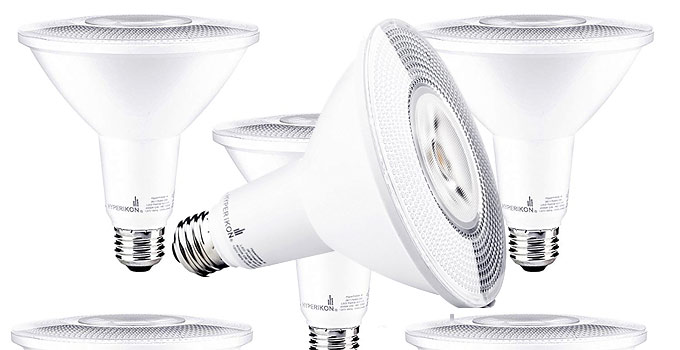
Quickly, before I recommend the specific best color temperature for outdoor security lighting or outdoor motion lights, let me briefly explain a few things (how it works).
Outdoor Security Lights – Warm White vs Cool White – What’s Best?
( In a hurry? Jump straight to the answer )
But if you’re interested in the “why”, read on…
Light is an oscillating electromagnetic wave. Visible light is a band (segment) of wavelengths that our eyes can ‘see’. Actually, it’s the ‘rods’ and ‘cones’ in our eyes that get the job done. More on that in a minute.
Light itself is not colored. Light is simply electromagnetic waves of various wavelengths within the visible spectrum. The color is our brain’s translation/interpretation of those wavelengths through our eyes.
What is Color Temperature?
Color temperature is a technical representation of the perceived color of light. The visible spectrum ranges from deep red (long wavelengths) shortening through yellow, green, blue, all the way to deep violet (short wavelengths).
Color temperature is measured in degrees Kelvin (K).
The Color Temperature Of Light Bulbs
When you look at a package of LED light bulbs, among the specifications there will be a color temperature rating.
The color, or hue, will range from a very soft yellow-red on up to a white, even bluish color hue.
Many manufacturers list the equivalent color temperature in Kelvin (K). That said, they market words like “soft white”, “warm”, “cool white”, etc.. which is arbitrary. However, it is the color in degrees Kelvin which is the important factor for comparison.
EXAMPLES
A 2700K light bulb gives off a very soft yellow hue, similar to the standard incandescent bulb (soft white). These are popular in homes.
3000K bulbs are still warm but with a bit more ‘white’ in them (warm white). I like these in homes too. It’s not as yellow as 2700, but still ‘cozy’.
A 5000K bulb is considered to be “horizon daylight” (Wikipedia’s term) and is pretty much ‘white’. It approximates a typical tubular fluorescent lamp, “cool white”.
6000K is the color temperature of “vertical daylight” (the sunlight above the atmosphere), similar to a professional camera’s electronic flash.
Bulbs are available in a variety of color temperatures. I find that once you get up to 4000K, the bulb hue appears to be pretty close to white.
Best Color Temperature For Outdoor Security Lights
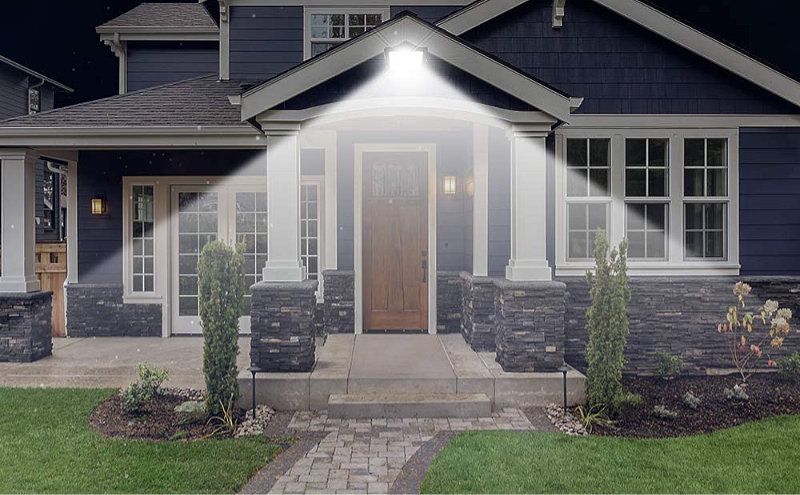
Okay so let me answer this… Warm white or Cool white for security lights?
5000K – 6000K light produces HIGHER CONTRAST as seen by our eyes.
For the sake of security lighting or flood lights purposed for security, I would go with at least 5000K color temperature bulbs or floods. In marketing terms, that would be Cool white (5000K), or slightly bluer (6000K).
My recommendation for the best color temperature for outdoor security lighting:
My preference for ideal outdoor security lighting: Floods (rather than spots), at 5000K or 6000K color temperature, preferably 1400 lumen or more (depends on what you’re lighting up though), waterproof, and PAR38 to fit in standard fixtures. Check for outdoor rating. That is, assuming you’re using them outdoors.
My current choices as of this post update:
6000K
It’s slightly pricey, but, the color temperature is 6000K (6000K LED floods are somewhat hard to find, whereas 5000K are more readily available). It’s IP65 waterproof. 1400 lumen with a flood beam angle of 120-degrees.
LED FLOODS (6000K)
(view on amzn)
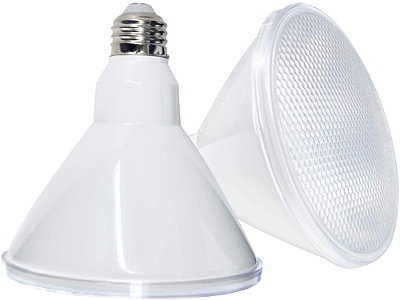
5000K
While the bulb listed above is great if you’re willing to pay for it (I love the 6000K attribute), here’s another choice, and they’re what I’m currently using (because I have a lot of floods and these cost less).
There are far more choices for standard PAR38 flood lights with 5000K color temperature – and even more with 3000K (but I don’t like them as much for security lighting). Also, the following LED floods are dimmable. Although I don’t use the dimming feature, it has been said that a dimmable LED floodlight functions better with the RAB Stealth-360 outdoor motion sensor lights (the best sensor on the market – which I use exclusively) (My review article linked below).
The following are 1600 lumen LED floodlights, outdoor rated – waterproof, 5000K color temperature:
LED FLOODS (5000K)
(amzn)
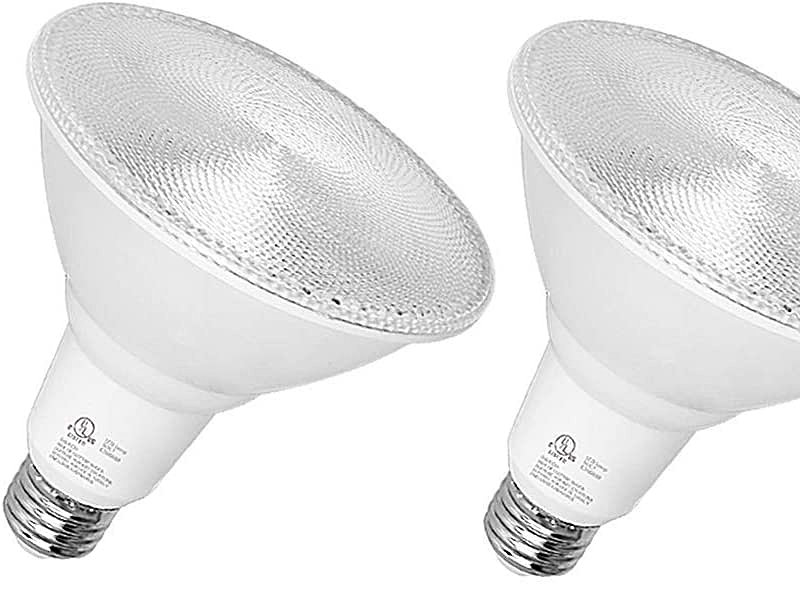
Here’s another type of ‘stand-alone’ outdoor security lighting that’s becoming popular. An all-in-one outdoor bright security light. It’s portable too. Could be used as a work light, or mounted permanently. This one (for example) is 6000K color temperature and a bright 3000 lumens:
Waterproof Daylight
(amzn)
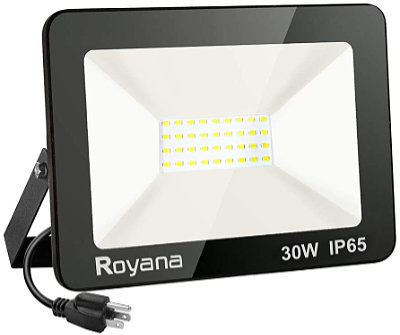
Important For Security Lighting
1. Sufficient lumens (brightness) to illuminate the area.
2. Enough light to quickly identify objects, people, movement.
3. Good color discernment.
While a ‘warmer’ color temperature might look better for specific landscaping appeal, when it comes to home security you will want to bathe the area in bright ‘cool white’ light at 5000K or even cooler at 6000K (a hint of blue).
How Do Our Eyes See Color?
Light waves enter the eye as they travel through the pupil and hits the retina.
The retina has cells that sense the light (rods and cones).
Rods sense the intensity of the light.
Cones sense the wavelength (translated to color).
There are 3 types of cones and they’re especially sensitive to red, green, and blue – but also wavelengths in-between to a lesser extent.
When light waves activate the various cone groups, a chemical reaction sends messages to the brain which interprets what color (wavelength) the light is.
data sources include Wikipedia
(this article has been updated with more precise detail for your knowledge-gathering experience)
Read the following related articles:
LED Light Bulbs – Cost Savings Over Incandescent
